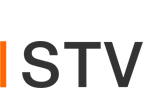WETLAND CATTAIL
The sustainable transition in the Netherlands is in full swing and affects everyone, including farmers. A preliminary conclusion is that the farmer is no longer only responsible for our daily food but in the future will also become an important supplier of raw materials for the buildings we live in. Fibre crops such as cattail are indispensable for the production of insulation materials and composite products for the purpose of construction. The challenge is how to responsibly implement these crops in our current acreage and define their economic value. An important part of the value comes from the long term capture and storage of CO2 in our future biobased houses by utilizing these plants. These plant fibers allows us to build CO2 negative instead of emitting CO2. In this project, we describe the farmer not only as Food Farmer but also as Fiber Farmer. Farmers in the Netherlands have gone through several major transitions over the centuries and now too they face major changes to meet our climate goals. Our farmers need our support to make this transition happen in the coming decades.
For centuries the Dutch have been experts is controlling the water levels in our low lands. Land was reclaimed from the sea and repurposed for agricultural use. An intrigued web of small and large waterways with strategically placed pumping stations enables us to drain our lands to make them dry enough for our milk producing cows and high yield crops. One of the consequences of this de-watering is the drying out and lowering of our lands, and specifically also our peet deposits. By reducing the water levels in our peet soils we accelerate the oxidizing of these layers causing large amounts of CO2 to be released. Now the reduction of CO2 emissions is urgently required we are increasing the water levels in several areas in the Netherlands, in specific the areas adjacent to Natura 2000 reserves. A substantial amount of these lands are not suitable for traditional food or livestock farming. For these plots alternative crops are required. Wetland crops such as Pitre (Pitrus), Cattail (Lisdodde) en Reed (Riet) are very suitable for wet soils and have the benefit of extracting nutrients and excess phosphate from the soil greatly improving the quality of our surface waters which in turn will benefit biodiversity greatly. Studio Tjeerd Veenhoven (STV) is researching the value chain of wetland crops for over 8 years. Pioneering how to grow, harvest, process and apply these wetland fibers for building applications. Together with local stakeholders and with support from European and National innovation programs the potential of these crops is tested.








